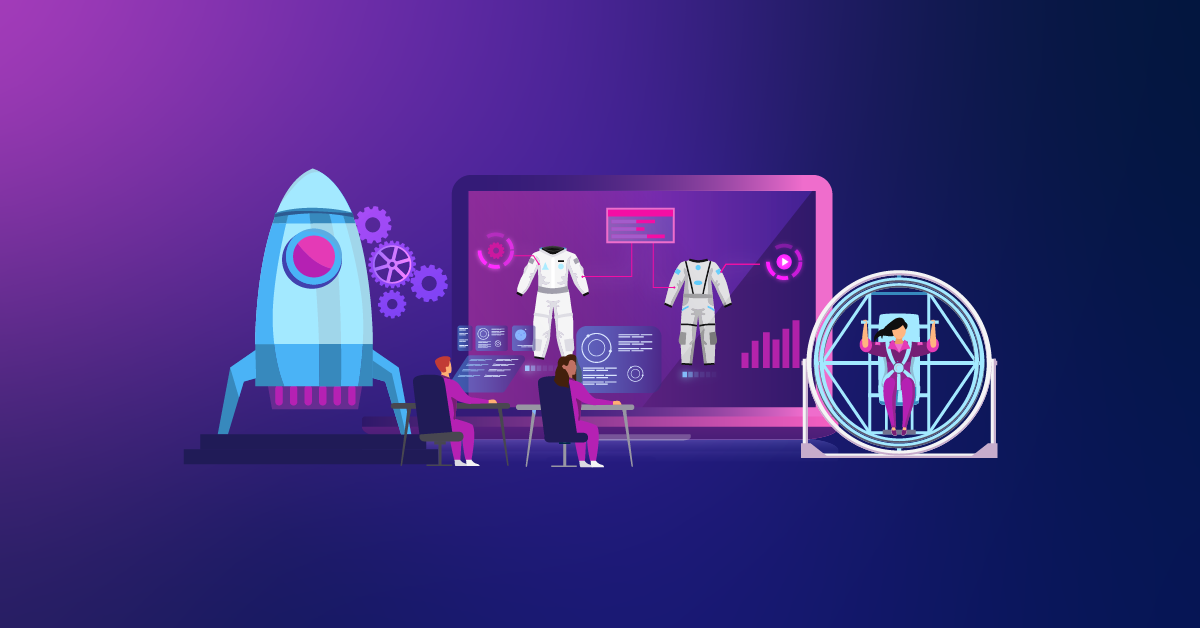Innovation. It's the lifeblood of thriving businesses and a cornerstone of the UAE's ambitious national vision. In pursuit of groundbreaking ideas, many organizations have established dedicated "innovation labs," "skunkworks," or R&D teams – often sleek spaces filled with whiteboards and optimistic energy. While well-intentioned, these initiatives frequently fall short of their ultimate goal: creating a lasting impact on the entire organization.
Too often, the innovation lab becomes an isolated island, disconnected from the core business realities and struggles to get its ideas adopted or scaled. The initial buzz fades, and the organization reverts to business as usual, leaving behind a case of "innovation theatre" rather than true transformation.
So, how do businesses move beyond these isolated efforts and cultivate an innovation culture that actually sticks – one where curiosity, experimentation, and continuous improvement are woven into the very fabric of the organization? It requires a deliberate, holistic approach that extends far beyond the walls of any single department.
The Limits of the Isolated "Innovation Lab"
Confining innovation to a specific team, while sometimes necessary for deep R&D, often fails to build a pervasive culture because:
- Disconnect from Core Business: Ideas generated in isolation may not address real operational needs or market challenges.
- Scaling Challenges: Integrating innovations back into the main business faces resistance ("not invented here" syndrome) and bureaucratic hurdles.
- Limited Collective Intelligence: It fails to tap into the diverse perspectives, experiences, and insights of employees across all functions.
- Cultural Divide: It can inadvertently create an "us" (the innovators) versus "them" (the rest of the company) mentality.
Pillars of a Sustainable, Organization-Wide Innovation Culture
Building a culture where innovation thrives requires nurturing several key elements simultaneously:
- Visible Leadership Commitment & Role Modeling: This is non-negotiable. Leaders, from the C-suite down, must do more than just talk about innovation. They need to actively champion it, allocate dedicated resources (time and budget), genuinely tolerate and even celebrate intelligent failures as learning opportunities, and visibly participate in innovation initiatives. Their actions speak louder than any mission statement.
- Psychological Safety & Empowerment: Employees at all levels must feel safe to propose ideas, question the status quo, experiment, and admit mistakes without fear of blame or ridicule. This requires fostering an environment of trust and empowering individuals and teams with the autonomy to explore new approaches within defined boundaries. Innovation cannot flourish where fear prevails.
- Clear Processes & Enabling Resources: While culture is key, innovation needs some structure to thrive. Establish clear, accessible channels for employees to submit ideas. Define transparent criteria for evaluating and prioritizing them. Allocate dedicated time (e.g., Google's famous 20% time, or smaller allocations) and seed funding for experimentation. Create clear pathways for promising ideas to be developed and scaled. Provide access to tools and training (e.g., Design Thinking workshops).
- Fostering Cross-Functional Collaboration: Silos are innovation killers. Actively create opportunities for people from different departments, backgrounds, and levels to connect, share diverse perspectives, and collaborate on challenges. This could be through cross-functional project teams, internal innovation challenges, shared digital platforms, or even informal networking events. Leveraging the diverse talent pool inherent in many UAE organizations is a massive advantage here.
- Meaningful Recognition & Rewards: Acknowledge and celebrate innovative behaviors and efforts, not just the successful outcomes. Recognize individuals and teams who experiment, collaborate effectively, or champion new ideas – even those that don't pan out initially. While financial rewards can play a role, often non-monetary recognition (public praise, development opportunities, leading a project) is highly motivating.
- Embracing Continuous Learning & Adaptation: An innovative culture is a learning culture. Encourage curiosity and provide opportunities for skill development. Crucially, embed processes for learning from both successes and failures through post-mortems or retrospectives focused on insights, not blame. Be prepared to adapt the innovation approach itself based on what works for your specific context.
Making Innovation Stick: Practical Steps
- Communicate Relentlessly: Continuously reinforce the strategic importance of innovation, share success stories (big and small), and highlight learnings from experiments.
- Integrate, Don't Isolate: Weave innovation goals and metrics into existing processes like strategic planning, budgeting, and performance management.
- Equip Your People: Provide access to collaboration tools, idea management platforms, and relevant training resources.
- Celebrate Intrapreneurs: Identify and support employees who proactively drive innovation from within their existing roles.
- Start Small & Iterate: You don't need to boil the ocean. Pilot new approaches within specific teams or focused challenges, learn, and then scale what works.
The UAE Context: A Catalyst for Cultural Change
The UAE's dynamic market and strong national focus on innovation create both an opportunity and an imperative for businesses to cultivate these cultures. Organizations that successfully embed innovation across their workforce will be better positioned to adapt to rapid change, leverage the nation's diverse talent, contribute to the knowledge economy, and ultimately, outperform their peers.
Conclusion: Innovation as Everyone's Business
Building an innovation culture that truly sticks is a marathon, not a sprint. It requires moving beyond isolated labs and initiatives to fundamentally embedding innovative thinking and behaviors throughout the organization. It demands sustained commitment from leadership, fostering psychological safety, providing clear processes and resources, encouraging collaboration, and recognizing effort. While challenging, the reward is immense: a resilient, adaptive organization where innovation isn't just a department, but simply the way business is done – unlocking the collective potential of your entire workforce to drive continuous improvement and lasting success.
Is your organization ready to move beyond innovation theatre and build a culture where new ideas truly thrive and stick? Dehongi partners with leaders to cultivate environments that foster sustainable innovation. Let's discuss how to embed innovation into your company's DNA.
